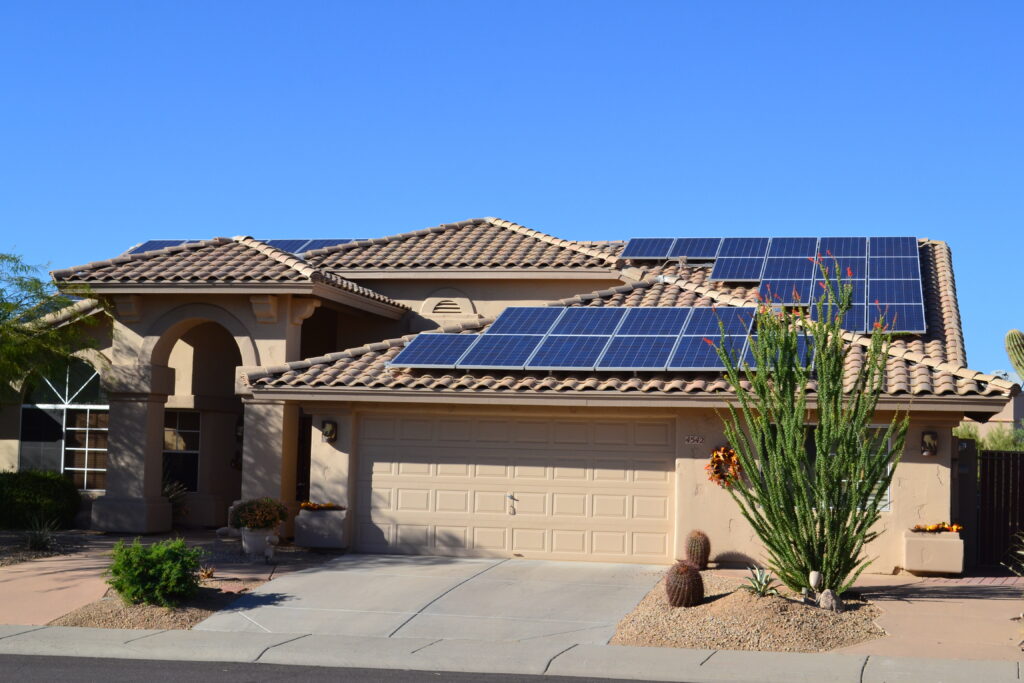As solar energy continues to grow in popularity, more customers are considering solar panels for their homes. However, one of the biggest concerns potential buyers have is understanding the return on investment (ROI). It is important to explain the financial benefits of solar energy in simple terms. By addressing common concerns about upfront costs, long-term savings, and additional advantages, you can help your customers stay informed and see the bigger picture of how solar can pay for itself over time.
Understanding the Upfront Costs of Solar Panels
One of the first things to discuss when explaining solar panel ROI is the total cost. While the overall investment may seem daunting, it’s important to remember that solar panels are a long-term investment that can pay off substantially over time.
Factors Affecting Costs
The cost of installing solar panels varies depending on various factors such as:
- System size: The bigger the system, the more energy it can generate, but also the higher the package price.
- Quality of equipment: The type of panels and inverters used can influence the cost.
- Financing Type: Depending on what method the customer chooses to pay with, there may be no upfront costs, but the monthly bill will vary. It’s important to focus on utility bill savings and the “rent vs own” concept.
Though prices fluctuate, it’s safe to say that in California, the average cost for a residential solar panel system will be less than the customer can expect to spend on their total power bills over the next 10 years. There’s a huge range when it comes to specific costs because every home is different and will need a custom quote. 2024 ranges from $28,000 to $35,000 before incentives for a standard 7kW system. Additional costs for batteries, main panel upgrades, or other customizations may increase the total investment. Your mission, should you choose to accept it, is to save the customer from throwing their dollars away on a rent check when they could be in more direct control of their power.
Incentives and Rebates
Thankfully, there are several programs designed to reduce the upfront costs of solar panels:
- Federal Solar Investment Tax Credit (ITC): The ITC allows homeowners to claim a 30% tax credit on the cost of their solar system, including installation and energy storage systems like batteries, through 2032. There is no cap on the credit, and any unused portion can be carried over to future years. To claim this, file IRS Form 5695 with your tax return. This credit helps reduce upfront costs and encourages clean energy adoption. This credit is only available to homeowners who purchase the system with cash or a loan, not on leased or third-party owned systems.
- California-Specific Net Metering Policies: Net metering allows homeowners to receive credits for excess energy produced by their solar panels. This can offset the cost of future utility bills.
- Financing Options: There are also various financing options available to help customers spread the cost over time, including solar loans, leases, and power purchase agreements (PPAs). These programs make it more affordable for homeowners to install solar panels with little to no upfront cost. Note that these programs are not eligible for the ITC, but the third-party ownership has other attractive advantages and big savings.
Long-Term Savings: How Solar Reduces Energy Bills
One of the most significant selling points of solar panels is the long-term savings. Solar power can significantly reduce electricity bills, especially in areas like California, where utility rates are high.
Electricity Savings
In California, the average cost per kilowatt-hour (kWh) of electricity is around $0.30. With solar panels, homeowners can offset a significant portion of their energy use, lowering their monthly electricity costs. For example, if a home uses 1000 kWh/month, it’s easy to see how the savings can add up. If you can design a solar system that offsets the bulk of their electric needs, that translates to saving $300 per month, or around $3,600 annually, less whatever monthly payment they’ve selected, of course.
How Net Metering Works
Net metering plays a crucial role in maximizing ROI. With net metering, homeowners with solar systems can sell excess energy back to the grid. This generates credits on their energy bills, helping to reduce costs even further. In California, where solar energy production often exceeds consumption, net metering can provide significant savings. For instance, if a home produces 1,000 kWh/month but only uses 500 kWh, the homeowner can receive a credit for the excess that will roll over to future bills. Every utility has a different exchange rate for excess power, but if the homeowner stores it in a battery, they can choose when to export at the highest rate for a bigger return.
Maximizing ROI Through Energy Consumption
To maximize savings, customers should be encouraged to include a battery and potentially even adjust their energy habits. Using appliances like washers and dryers during peak sunlight hours, when the system is producing the most energy, can lower their dependence on the grid and increase their savings. Storing excess energy in a battery configured for self-consumption or rate arbitrage will also give them peak payback.
Solar Panel Payback Period: When Will Customers Break Even?
The payback period for solar panels is how long it takes for the system to pay for itself through energy savings. This period varies based on factors like system cost, electricity consumption, and available incentives. Homeowners in California, for instance, may see a return on investment in as little as 5-7 years, but it can be longer depending on individual circumstances like financing and system size. Because of the advances in technology and the increase of utility rates, it’s safe to offer an estimate that the ROI period of solar is less than 10 years.
Factors That Impact Payback Time
Several factors influence how quickly the system pays for itself:
- Electricity Rates: Areas with high electricity rates (like California) will see a faster payback period because the savings from reduced utility bills are greater.
- Available Incentives and Tax Credits: Financial incentives like the ITC and state-level rebates can significantly shorten the payback period.
- System Efficiency and Energy Production: The efficiency of the solar system itself impacts how much energy it produces, which affects how quickly the savings accumulate.
Once the payback period is complete, homeowners can enjoy years of free energy, making solar panels a sound financial investment.
How Solar Increases Home Value
In addition to reducing energy bills, solar panels can increase the resale value of a home. According to studies, homes with solar systems sell for 4–5% more than comparable homes without solar panels. This increase in home value is particularly important in markets where energy efficiency is a selling point. Note that leases and PPA’s may not hold the same resale value because of the contractual details, but many third-party programs offer attractive buyout options after a few years.
Energy-Efficient Homes Appeal to Buyers
As more buyers become aware of the long-term savings and environmental benefits of solar energy, homes with solar panels are becoming more attractive. Buyers may be willing to pay a premium for a property that offers energy independence and reduced utility costs. Additionally, solar panel warranties provide buyers with the confidence that the system will continue to work efficiently for decades.
Beyond Financial ROI: Environmental & Energy Independence Benefits
While the financial ROI of solar panels is clear, it’s also important to highlight the broader environmental and energy independence benefits.
Environmental Impact
By choosing solar, homeowners can significantly reduce their carbon footprint. Solar panels generate clean, renewable energy, which helps combat climate change and reduces reliance on fossil fuels. For environmentally-conscious customers, the positive impact on the planet can be a compelling reason to invest in solar energy.
Energy Independence
Another significant benefit of solar is energy independence. With a solar panel system, homeowners become less reliant on the grid, making them less vulnerable to rising electricity rates. This protection against price fluctuations can result in long-term savings, especially in regions with volatile utility costs.
Alignment with Clean Energy Goals
In states like California, solar energy aligns with state-level clean energy goals, helping customers contribute to the state’s commitment to reducing greenhouse gas emissions. For customers interested in supporting renewable energy, this can be an additional motivating factor.
How Weather and Location Impact Solar ROI
Weather and location play an important role in determining how much energy solar panels can generate and, in turn, how quickly the system will pay for itself.
Sunlight Exposure & Peak Hours
Homes that receive direct sunlight for most of the day will produce more energy than those in areas with limited sunlight. South facing roofs are generally the most efficient for solar energy production. Homes with these ideal conditions will see a faster return on investment.
Seasonal Variations
Solar panels produce more energy during the summer due to longer daylight hours. However, modern systems are designed to generate sufficient energy year-round, even during cloudy days or in regions with limited sunlight.
Local Utility Rates & Incentives
As mentioned, high utility rates can lead to faster payback periods, which is why solar panels are a particularly good investment in regions like California. Additionally, local incentives can further enhance the financial benefits.
Helping Customers See the Bigger Picture
Explaining the ROI of solar panels involves showing customers the potential savings on electricity bills, the benefits of net metering, the shorter payback periods, and the added home value. Solar panels offer long-term financial benefits, but the environmental impact and energy independence should not be overlooked.
Encouraging customers to take advantage of available incentives and tax credits is key to helping them get started on their solar journey. With the right education and support, solar panels can become a wise investment that pays off financially and environmentally. Ready to take the next step in your solar journey? Contact ESP today to learn how our solar dealer program can help streamline your sales operations.

